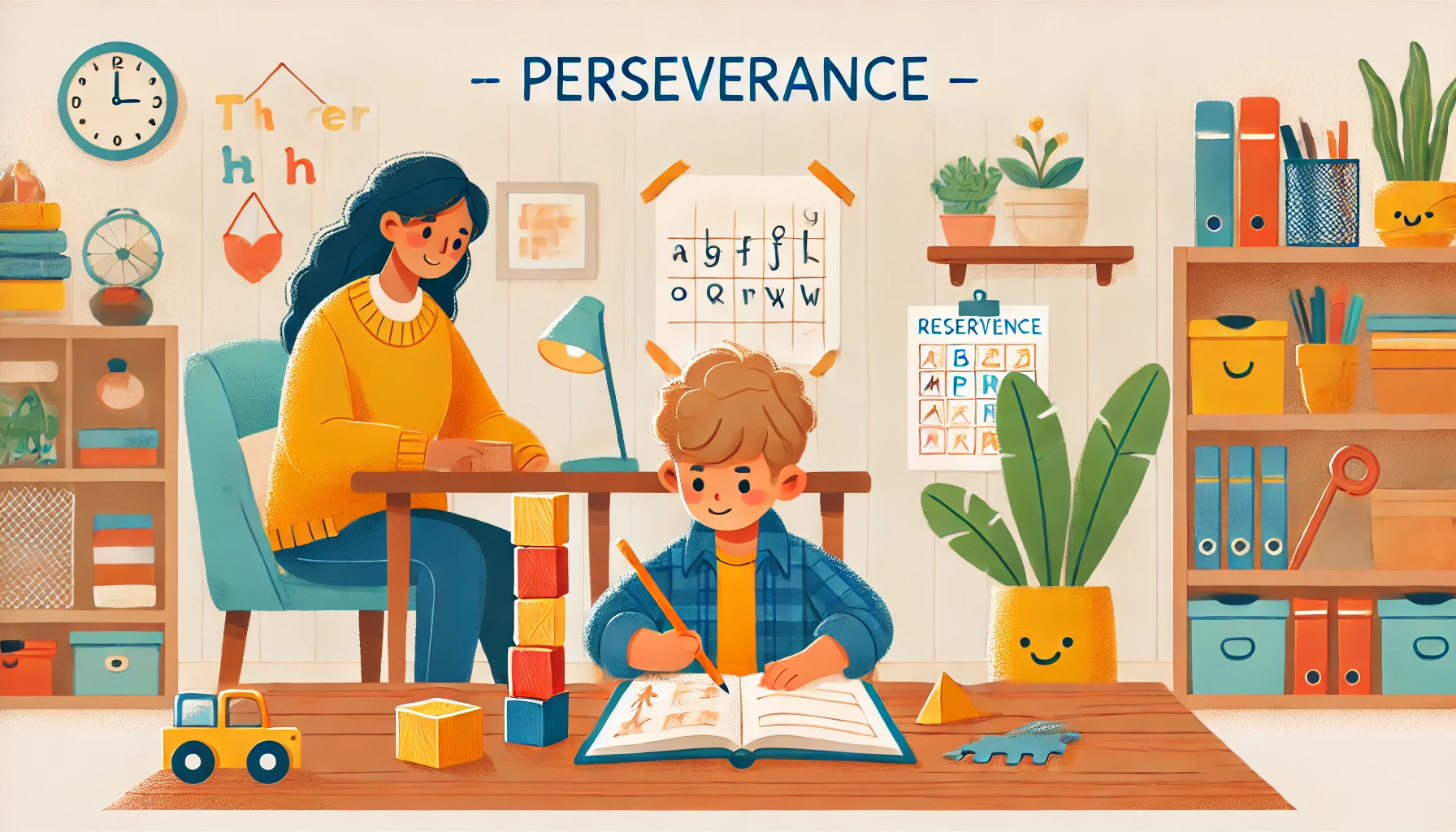How to Teach Young Children About the Value of Hard Work and Perseverance
Teaching young children about hard work and perseverance helps them develop resilience, confidence, and a strong work ethic. When kids learn that effort and persistence lead to success, they become more motivated to overcome challenges and achieve their goals. Parents can encourage perseverance through positive reinforcement, engaging activities, and role-modeling. In this article, we’ll explore practical ways to help children understand and practice perseverance.
Why Teaching Hard Work and Perseverance is Important
- Builds resilience – Helps children handle challenges without giving up.
- Encourages problem-solving – Teaches kids to find solutions instead of quitting.
- Develops patience and focus – Shows that success takes time and effort.
- Boosts confidence – Helps kids feel proud of their accomplishments.
- Prepares for future challenges – Equips children with a strong work ethic for school and life.
1. Teach That Hard Work Leads to Improvement
Helping kids understand that effort leads to growth builds a positive attitude toward challenges.
Activity Idea:
- Share stories of famous people who worked hard to succeed (e.g., athletes, inventors).
- Use the phrase “Practice makes progress” instead of “practice makes perfect.”
- Show real-life examples: “Remember when you couldn’t tie your shoes? Now you can because you kept trying!”
What Kids Learn:
- That persistence leads to improvement
- How effort helps them get better at new skills
- The importance of patience in learning
2. Praise Effort, Not Just Results
Encouraging hard work instead of just success keeps children motivated.
Activity Idea:
- Say, “I love how hard you worked on this puzzle!” instead of just “Good job!”
- Create an effort chart, where kids earn stickers for trying, not just succeeding.
- Ask, “What did you learn while working on this?” to encourage reflection.
What Kids Learn:
- That effort is more important than immediate success
- How to enjoy the learning process, not just the outcome
- The confidence to keep trying even when things are difficult
3. Use Fun Challenges to Teach Perseverance
Engaging children in goal-setting activities helps them experience the rewards of persistence.
Activity Idea:
- Set up a small challenge, like building a tall block tower without it falling.
- Try a “minute challenge”, where kids practice a skill (like balancing on one foot) and track improvement.
- Encourage them to keep trying until they succeed, instead of giving up after the first attempt.
What Kids Learn:
- That perseverance leads to progress
- How to enjoy challenges instead of fearing failure
- The value of patience in achieving goals
4. Teach Kids How to Handle Frustration
Helping children cope with frustration encourages them to keep going even when things are hard.
Activity Idea:
- Teach deep breathing techniques to stay calm when feeling frustrated.
- Use positive self-talk: “I can try again” instead of “I can’t do it.”
- Encourage taking short breaks before retrying a task.
What Kids Learn:
- That frustration is normal but can be managed
- How to stay calm and keep trying
- The importance of persistence when things don’t go as planned
5. Read Books About Perseverance
Stories help children see examples of perseverance in action.
Activity Idea:
- Read The Little Engine That Could by Watty Piper (about never giving up).
- Discuss how characters overcame challenges: “What helped them keep going?”
- Ask kids to share a time when they worked hard to accomplish something.
What Kids Learn:
- That perseverance leads to success
- How determination helps overcome obstacles
- The motivation to keep trying in their own lives
6. Encourage Kids to Set and Work Toward Goals
Setting small, achievable goals helps kids practice perseverance.
Activity Idea:
- Create a goal chart with a step-by-step plan (e.g., learning to ride a bike).
- Encourage kids to work toward a longer-term goal, like saving money for a special toy.
- Celebrate progress along the way, not just the final achievement.
What Kids Learn:
- That goals take time and effort to achieve
- How to break big tasks into smaller steps
- The satisfaction of reaching a goal through persistence
7. Show That Mistakes Are Part of Learning
Teaching children that failure is a stepping stone to success helps them develop resilience.
Activity Idea:
- Share stories of personal failures and how you learned from them.
- Encourage kids to try again after mistakes: “What can we do differently next time?”
- Play a guessing game, where mistakes are part of the fun and learning process.
What Kids Learn:
- That mistakes help them grow and improve
- How to view failure as a learning opportunity
- The importance of resilience in achieving success
8. Be Patient and Supportive as They Learn
Perseverance takes time to develop, so children need gentle guidance and encouragement.
Activity Idea:
- If a child feels discouraged, remind them: “You don’t have to be perfect. Just keep trying!”
- Offer help when needed but encourage them to solve problems independently.
- Reinforce that effort and progress matter more than speed or perfection.
What Kids Learn:
- That learning takes time and patience
- How to work through challenges instead of quitting
- The confidence to keep trying, no matter the obstacle
Final Thoughts
Teaching young children about hard work and perseverance helps them build resilience, confidence, and a strong work ethic. By encouraging effort, celebrating progress, and helping them handle frustration, parents can guide children toward developing lifelong perseverance skills.
